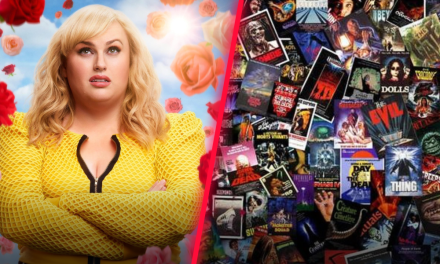Ne Zha II is not just another animated sequel, it is an explosion of color, movement, and mythology that fully embodies the “art” in martial arts. Writer-director Jiao Zi and his enormous team of artists, animators, and visionaries have created a film that is less a continuation and more a revolution. It builds on the foundation of the first Ne Zha while redefining what animated cinema can be, taking audiences on a journey that is as breathtakingly beautiful as it is emotionally resonant.
A Visual World Alive With Myth and Folklore
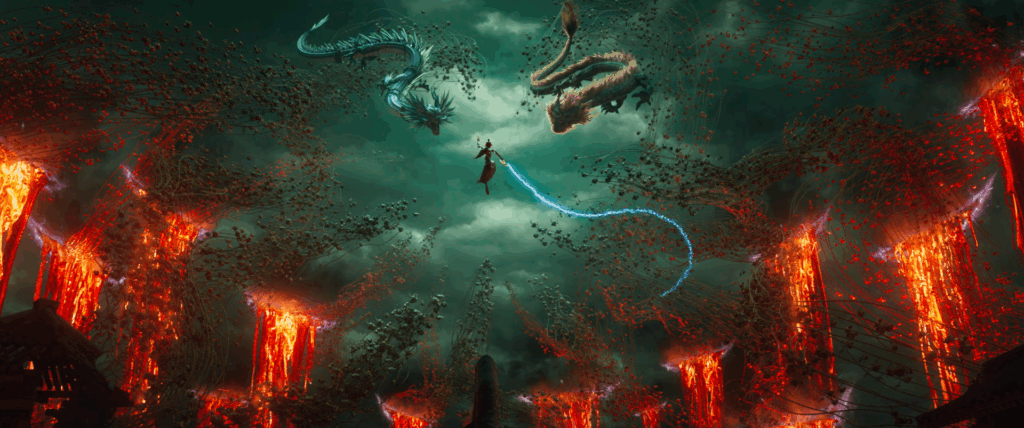
The visuals in Ne Zha II are so striking that they almost demand their own gallery exhibition. Every frame breathes with vibrance, saturated with bold palettes that call back to classic Chinese ink-wash paintings, jade palaces, bronzeware motifs, and natural landscapes rendered with both reverence and innovation. The design of the world alone could have carried the movie. But instead, it goes further, weaving Chinese folklore and art seamlessly into the fabric of its environments. The architecture of the gods, the organic flow of dragons, and the ethereal heavenly realms are all rendered with astonishing detail. You do not simply watch Ne Zha II, you fall into it.
The revolutionary rendering of natural elements is perhaps its crowning achievement. Fire, water, air, and earth are not just backdrops or power-ups, they are living forces animated with such precision that you can feel their weight and fluidity. Flames burn with chaotic individuality, rivers flow with crushing inevitability, and gusts of wind curve and slice with impossible sharpness. These elements do not just look real, they feel like they exist beyond the screen, channeling centuries of martial arts philosophy into animated spectacle.
Body Art
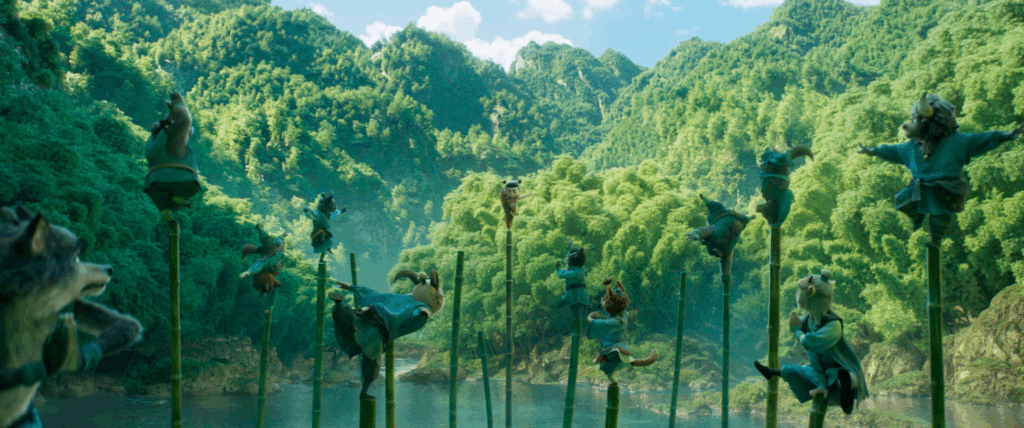
The action choreography elevates Ne Zha II into a league of its own. At its heart, this is a martial arts film, and the animators treat every movement with the reverence of a wushu master. Fights are not simple exchanges of blows, they are conversations, ballets, and battles of will expressed through the body. Each technique is deeply rooted in martial arts traditions, yet amplified by the limitless potential of animation. Blades clash with sparks that resemble calligraphy strokes. Limbs whip and stretch with impossible grace, echoing real-world kung fu forms but breaking free into an almost spiritual dimension.
The use of the elements within the choreography is staggering. One sequence transforms chains into weapons and cages, each link obeying the laws of water physics while still delivering punishing strikes. Another uses crabs that disassemble and reassemble mid-battle, turning a creature into a living, evolving weapon. These are not just battles, they are moving paintings, fusing martial artistry with the imagination of mythology.
A True Martial Arts Painting in Motion
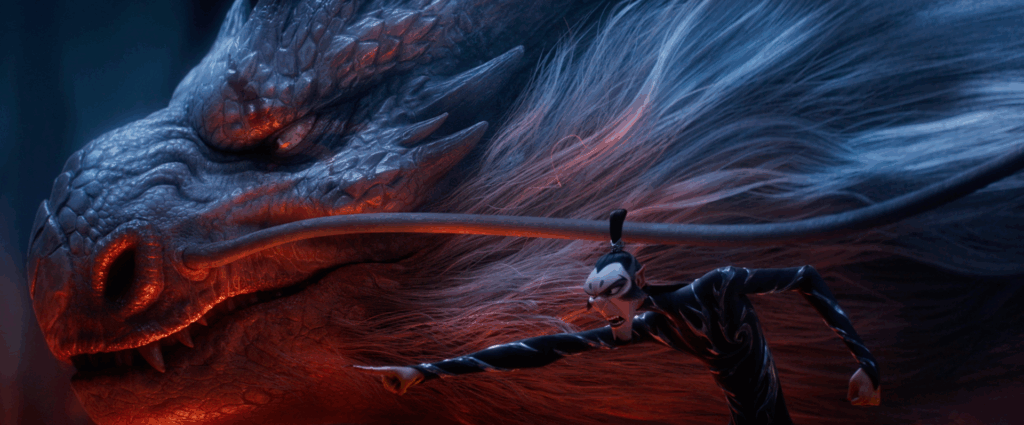
What makes Ne Zha II extraordinary is not just its artistry, but how it ties that artistry directly into martial arts philosophy. The flowing movements of combat, the interweaving of elements, the transformation of opponents into new forms, all echo the balance, discipline, and beauty of martial training. This is martial arts elevated to its most imaginative form. Every strike and parry is art, every clash of fire and water is calligraphy in motion. Every sweeping wide shot and sudden close-up feels intentional, like brushstrokes on a canvas. The entire film becomes a living, breathing masterpiece, one that blurs the line between folklore, combat, and pure visual art.
Story and Spirit
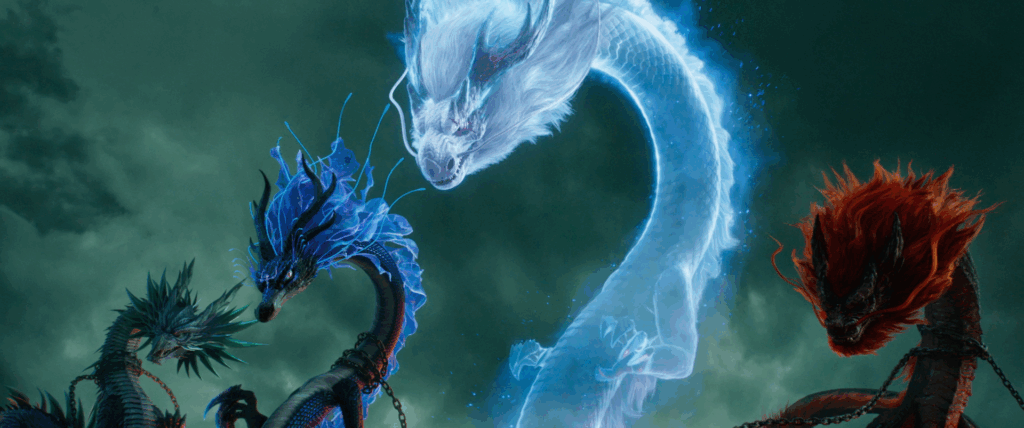
The story of Ne Zha II is strong, though it admittedly does not ascend to the same heights of originality as the visuals. The tale of Ne Zha and Ao Bing, sharing one body to undergo heavenly trials, is engaging and heartfelt, exploring themes of friendship, identity, and self-determination. Ne Zha remains an imperfect, bratty, yet deeply lovable hero whose journey resonates most with younger viewers who see themselves in his rebellion against labels and authority. Ao Bing, his foil and friend, provides a gentler counterbalance, making their relationship the emotional anchor of the narrative.
While the story serves the film beautifully, it does not feel groundbreaking in the way the visuals do. It is compelling, it flows, and it gives the audience characters worth rooting for, but it never quite strikes as uniquely as the animation itself. Still, the mythic trials, betrayals, and moments of sacrifice all work together to propel Ne Zha into his next stage of godhood in a way that leaves you satisfied.
The Sound of Battle
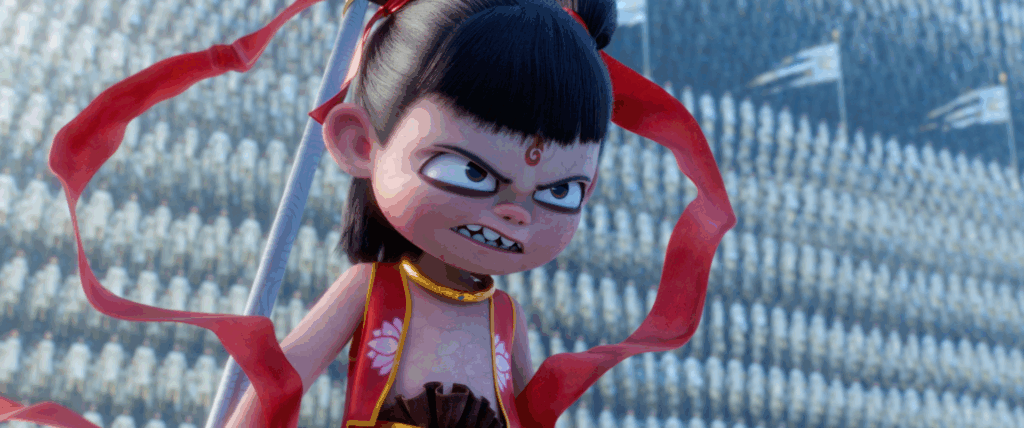
Sound design in Ne Zha II is every bit as inventive as the visuals. Each environment, each creature, and each element has a sonic signature that reinforces its identity. The crackle of fire, the whoosh of blades through air, the resonant hum of spiritual energy, all come together to immerse audiences in the world. Even more impressive is how the voice of each alien or mythical figure has been designed to reflect their form while still being comprehensible. When Ne Zha rages, his voice doesn’t just get louder, it sharpens like a blade being drawn.
The music, composed by Zhu Yun Bian, Yang Rui, and Akun, is sweeping, thunderous, and delicate in equal measure. It carries the grandeur of myth and the intimacy of human connection, often dialing up the emotional impact of the trials and tragedies to almost unbearable intensity. Without the score, the visuals would still dazzle, but with it, they soar.
The Dub and Its Limits
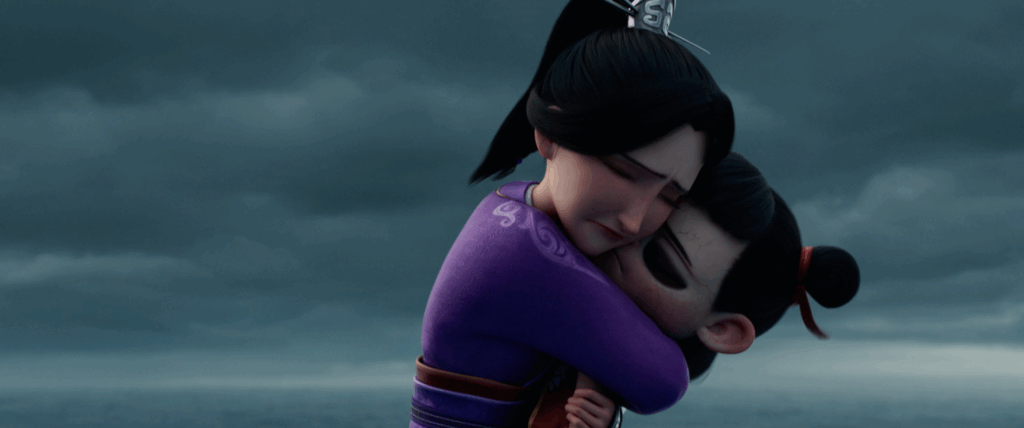
If there is a notable weak point, it is in the English dub. While the talent is there, including Michelle Yeoh as Lady Yin and Crystal Lee as Ne Zha, the execution feels rushed at times. Lip syncing occasionally falters, and the dialogue delivery has the uneven feel of early anime broadcasts before studios began refining their localization craft. It is not distracting enough to ruin the experience. But compared to the impeccable polish of the animation, it does stand out. In many ways, the dub feels like a step back from the first Ne Zha, which was smoother and more carefully matched.
Still, even with its flaws, the story shines through. You may occasionally notice the mismatch, but the spectacle of what is happening on screen quickly reclaims your attention. The visual artistry is so overwhelming that it forgives the imperfections in the voice work.
A Refreshing Storytelling Perspective
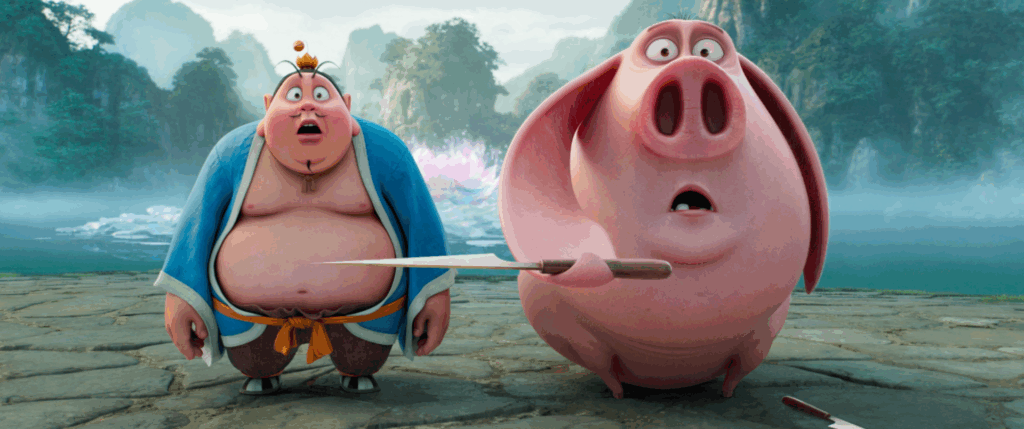
One of the most rewarding aspects of Ne Zha II is its embrace of a distinctly different storytelling style. In the West, we are often wrapped in a bubble of narrative structures, pacing, and character arcs that feel second nature because we have been conditioned to expect them. This film offers something else entirely, a reminder that there are many ways to tell a story, and that stepping outside of familiar formulas can be invigorating.
The cultural rhythm, the beats of emotion, and the shifts in tone feel unique, occasionally jarring, but always fascinating. It is a narrative style that invites patience and openness rather than rushing to spoon-feed its audience. This may very well contribute to the slight disconnect in the dub, as while the words have been translated, they have not always been localized to align with Western cadence or sensibility.
Fortunately, visual storytelling is a truly universal language, and Ne Zha II speaks it fluently. The breathtaking art, sweeping action, and mythic scale more than compensate for anything that might be lost in translation, turning the experience into something wholly captivating.
Ne Zha is Just Getting Started
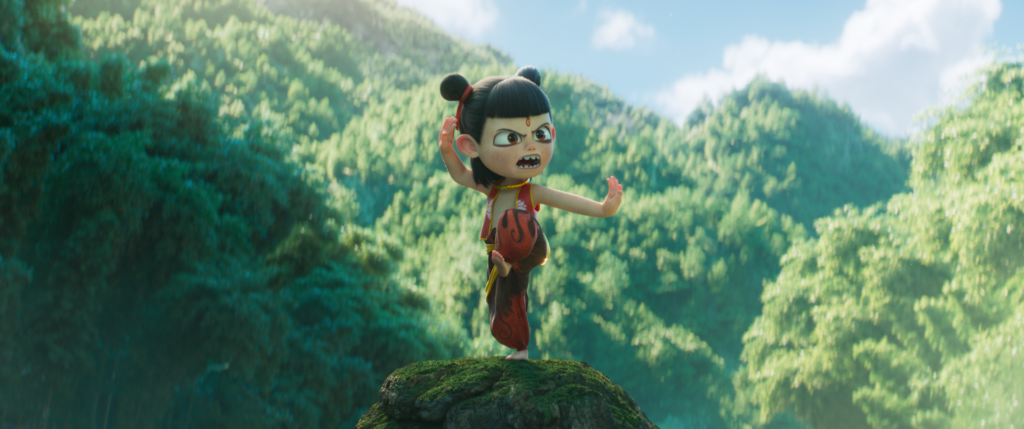
Ne Zha II is a spectacle unlike any other. Its story is strong, its characters relatable, and its themes of defiance, friendship, and identity resonate across cultures. But it is the artistry that truly cements it as a landmark achievement. The vibrance of the visuals, the choreography of the battles, and the innovative rendering of elements combine into an experience that overwhelms the senses in the best possible way. Even with a weaker dub and a narrative that does not quite match the originality of the visuals, the film stands tall as one of the greatest animated features ever created.
It is not just a movie. It is a reminder of what cinema can be when it embraces mythology, culture, and imagination without restraint. A true martial arts painting in motion. And likely only the second chapter of a novel adventure. For its revolutionary visuals, unique narrative, and masterful interweaving of cinematic elements, I give Ne Zha II a
9/10
Ne Zha II releases in theaters on August 22, 2025.
For more Reviews, make sure to check back to That Hashtag Show.

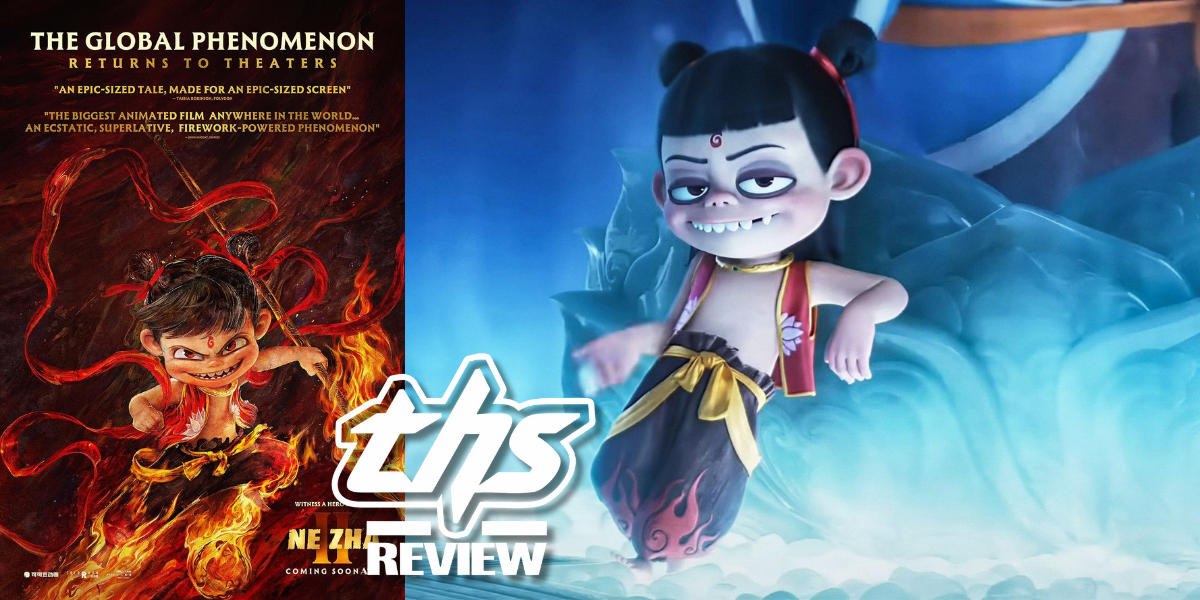
![The Chosen, Season 4 Episodes 1-3 [REVIEW]](http://18.211.146.234/wp-content/uploads/2024/02/project_20240119_2109348-01-1-440x264.png)
